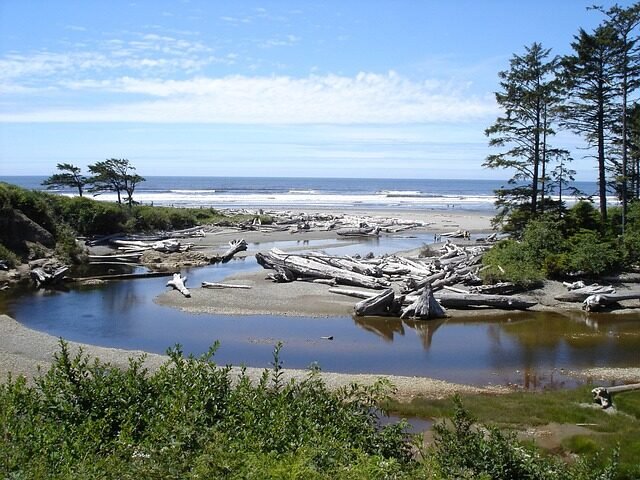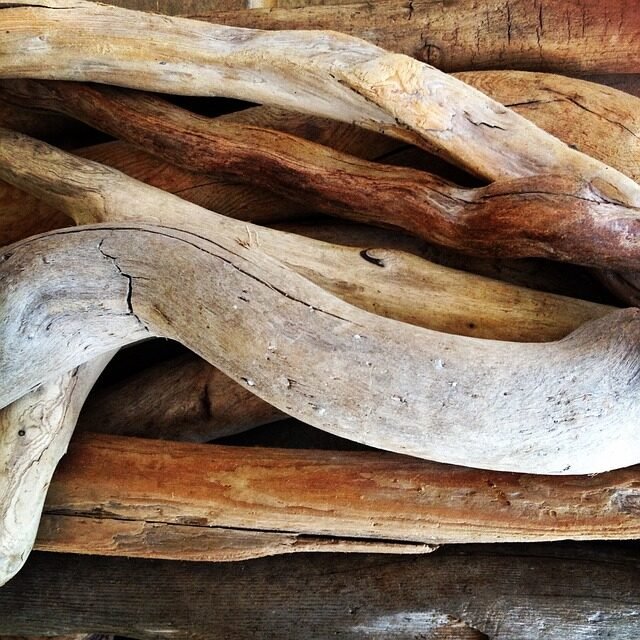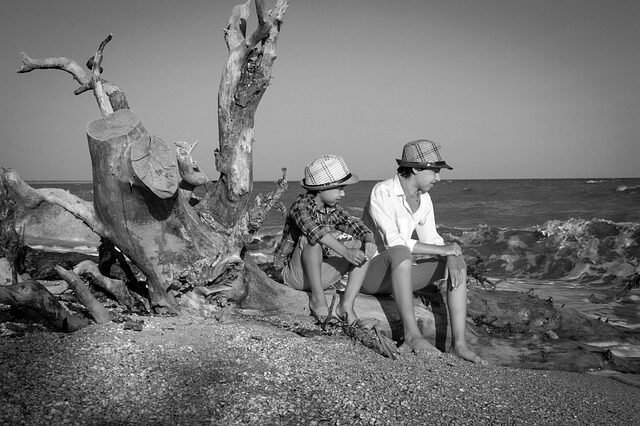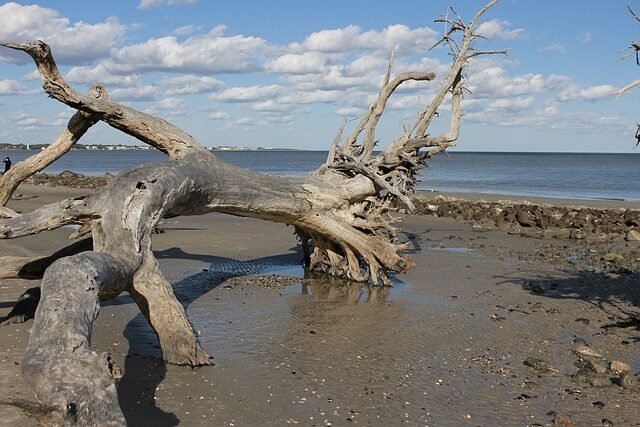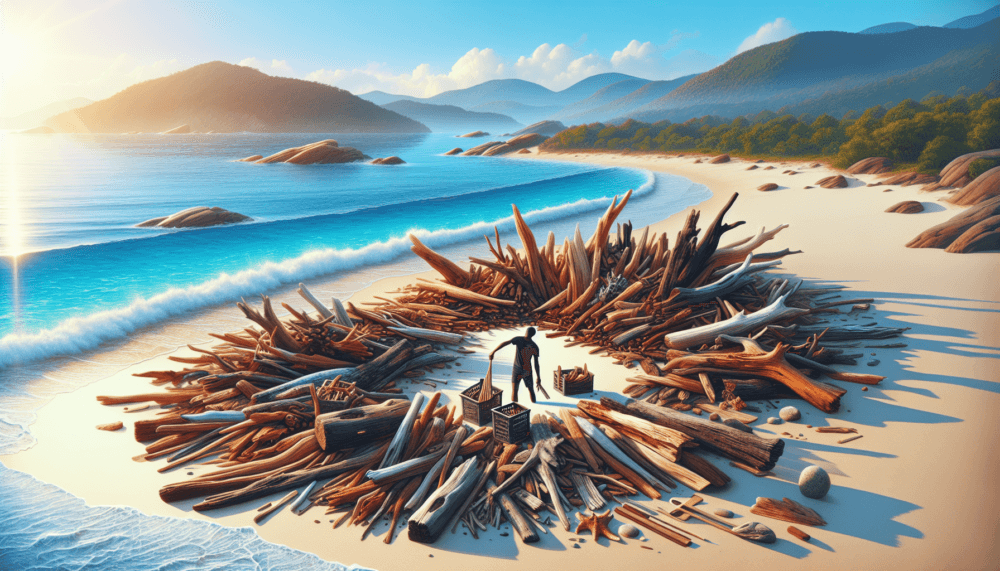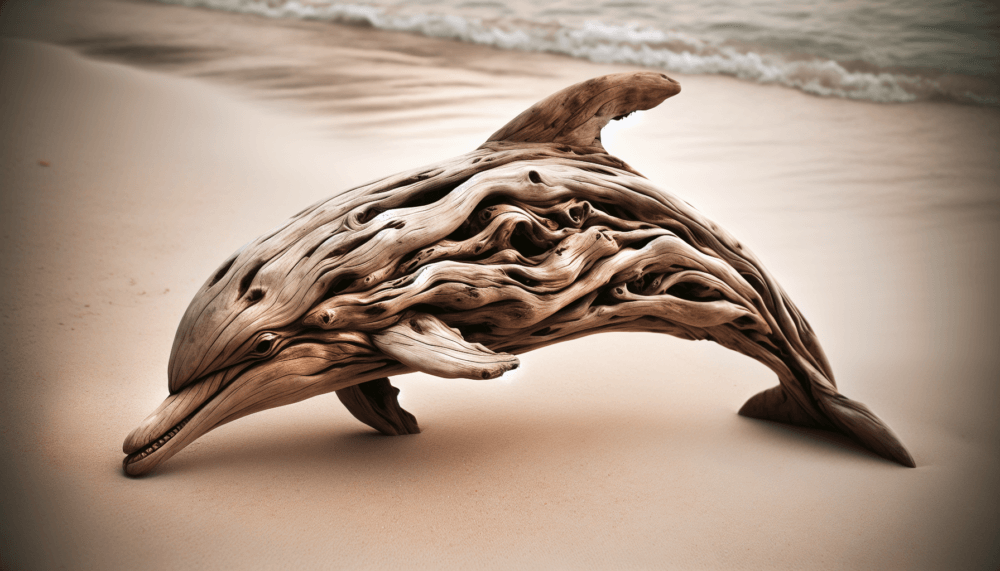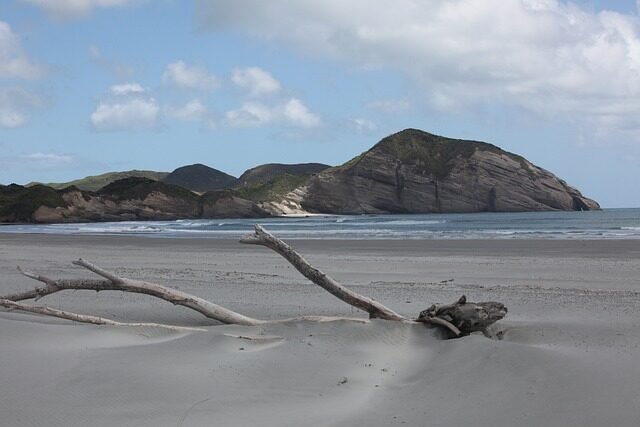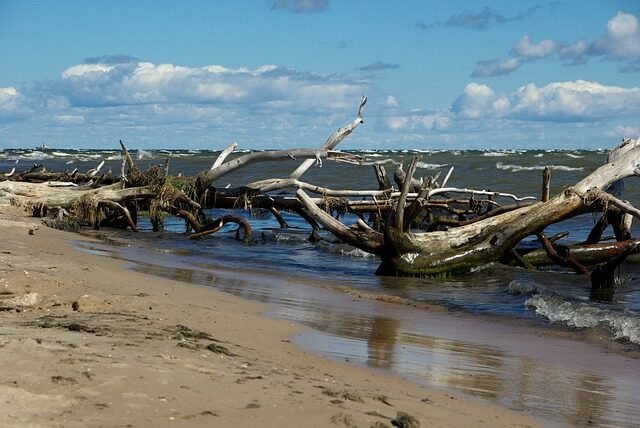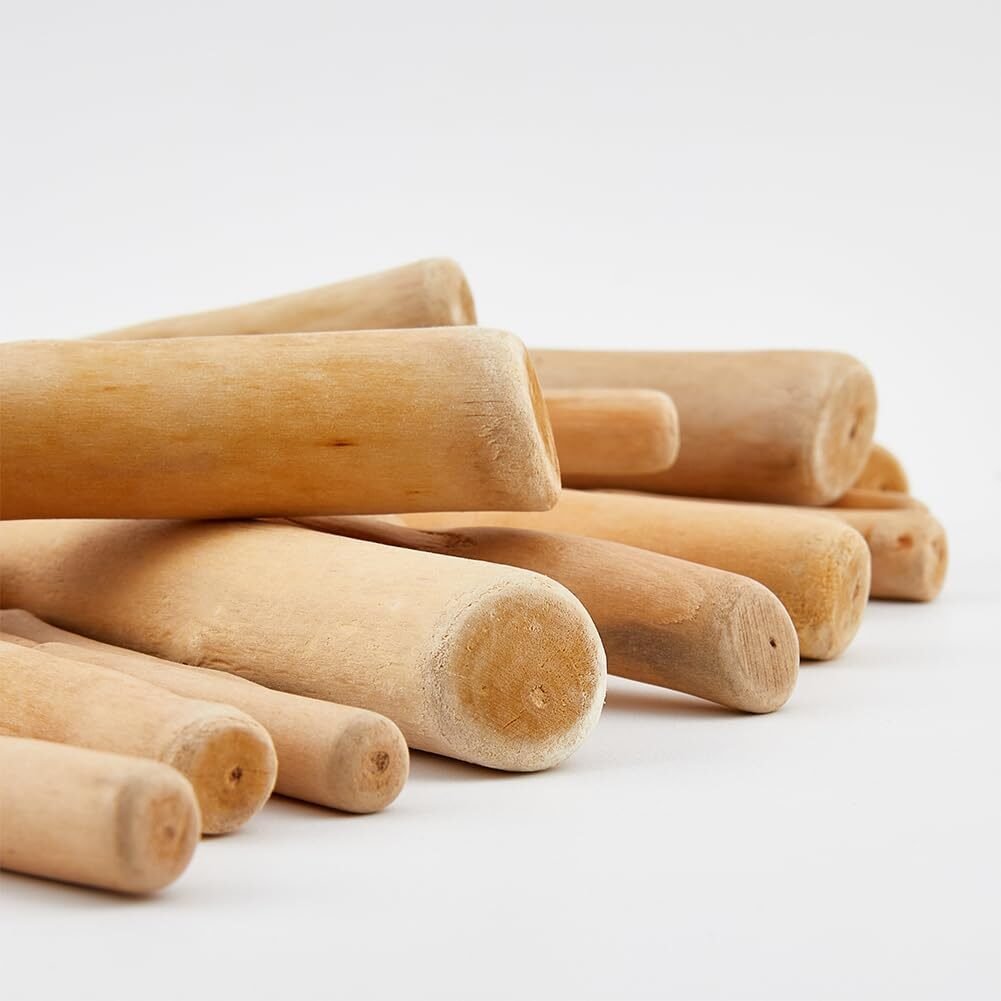Imagine yourself strolling along a serene coastline, the soft sand beneath your feet and the sound of gentle waves lapping against the shore. Suddenly, your eyes are captivated by a truly extraordinary sight – a beach completely adorned with an array of ancient driftwood. In this intriguing article, we will uncover the fascinating story behind how Driftwood Beach came to be, unraveling the mysteries of its origins and the forces of nature that have shaped this unique and enchanting destination.
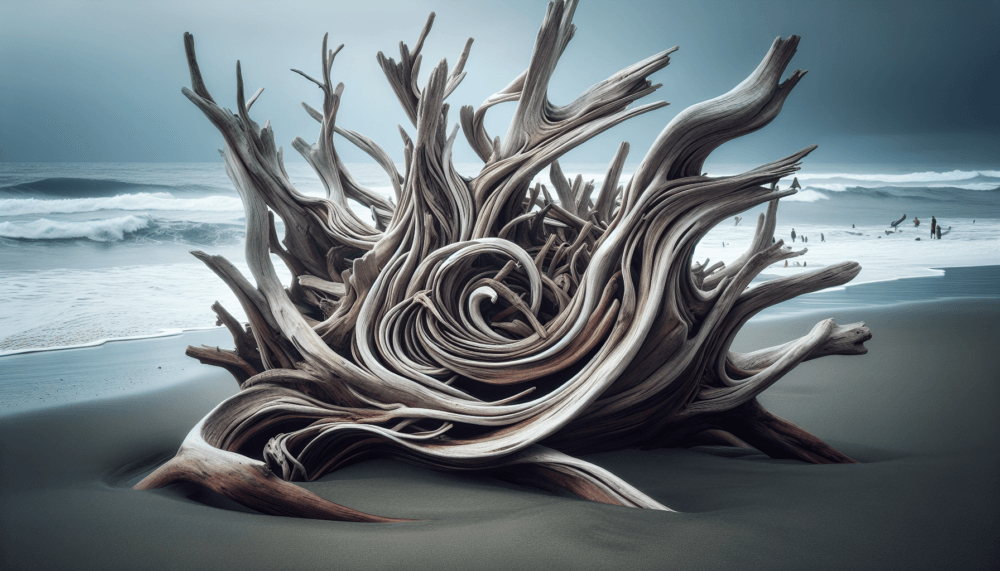
Formation of Driftwood Beach
Driftwood Beach is a captivating natural wonder that has become an iconic tourist attraction. This unique beach landscape is formed through the deposition of driftwood, erosion processes, the accumulation of driftwood, and the interplay between driftwood and sand.
Deposition of driftwood
The origins of the driftwood found on the beach are diverse. The most common sources include fallen trees, branches, and debris from nearby forests or riverbanks. These natural materials are carried by rivers or streams and eventually make their way into the coastal areas.
The transportation of driftwood is greatly influenced by tidal patterns. During high tide, the water levels rise and can carry the drifting wood towards the shore. Additionally, storms and high tides can play a significant role in the movement and deposition of driftwood, as the surges and strong currents can bring large quantities of wood onto the beach.
Effects of erosion
Erosion is a natural process that occurs along coastlines. This process is driven by the powerful forces of wind and water. The strong winds can wear away the edges of cliffs or bluffs, causing sections to collapse, and leading to the gradual erosion of the coastline.
The impacts of erosion on Driftwood Beach are evident in the presence of eroded trees. As the coastline erodes, trees that once stood on solid ground are gradually exposed to the relentless onslaught of the waves. Over time, these trees become weathered, stripped of their bark, and turn into striking skeletal structures.
Accumulation of driftwood
The accumulation of driftwood on the beach is influenced by various factors. The rate of driftwood accumulation depends on the availability and influx of new wood, as well as the interaction with coastal currents. These currents can either bring more driftwood to the beach or carry it away, creating a dynamic and ever-changing landscape.
The presence of nearby vegetation also plays a role in driftwood accumulation. Trees and plants along the coast can act as natural barriers, trapping and holding the drifting wood in place. Furthermore, sedimentation, the deposition of sand and other particles, can contribute to the accumulation of driftwood by providing a means for the wood to become buried and preserved.
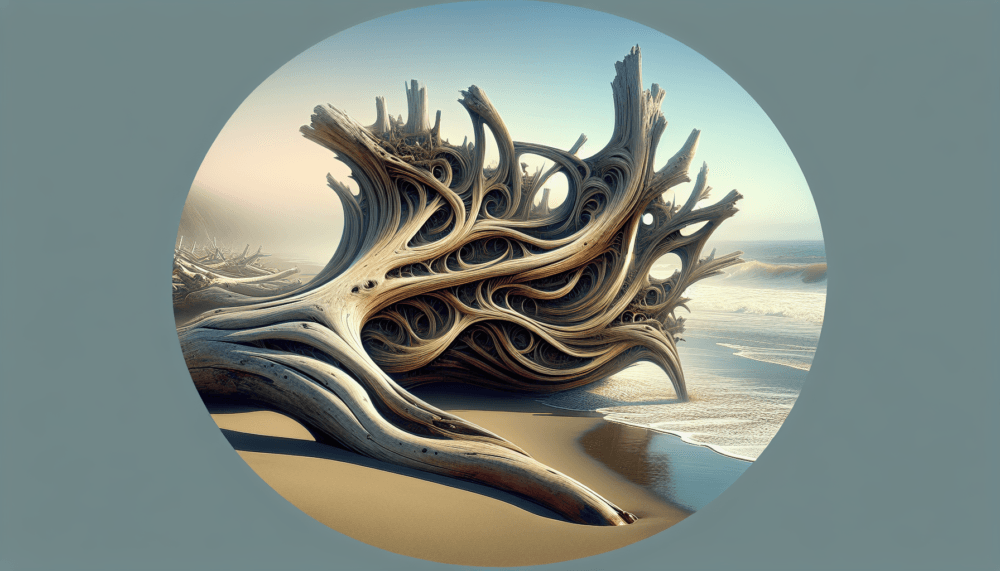
Creation of unique beach landscape
The interplay between driftwood and sand is a key factor in shaping the unique beach landscape at Driftwood Beach. The constant movement of the waves pushes the driftwood against the sand, causing the wood to become partially buried, creating a mesmerizing contrast between the brown and tan hues of the driftwood and the golden tones of the sand.
As the sand accumulates around the driftwood, small sand dunes begin to form. These dunes add texture and dimension to the beach, creating a scenic view that is truly captivating. The presence of the driftwood and sand dunes also serves an important ecological role, providing habitats for various species and helping to stabilize the beach ecosystem.
Factors Influencing Driftwood Beaches
Driftwood beaches are formed through the interaction of several geological, hydrological, and climatic factors. These factors determine the type of coastline, the availability of driftwood, the patterns of tidal currents, and the overall climate and weather conditions experienced in the area.
Geological factors
The geological characteristics of the coastline greatly influence the formation of driftwood beaches. The presence of cliffs or bluffs can provide a source of fallen trees and debris, while rock formations along the shore can trap and accumulate driftwood. Additionally, the availability of sediment, such as sand or gravel, plays a crucial role in the preservation and buildup of driftwood.
River and stream characteristics
The volume of water flow in rivers and streams is an important factor in the transportation of driftwood. Rivers with higher water flow are more likely to carry a greater amount of drifting wood towards the coast. The composition of riverbanks also affects the amount of driftwood reaching the beach, as softer banks are more prone to erosion and the release of wood into the water.
The forest cover along rivers can also contribute to the accumulation of driftwood. Fallen trees and branches from the forest can easily make their way into the water, becoming part of the drifting wood supply. Periodic flooding can further dislodge and transport wood from the forest ecosystem into the river system and eventually to the beach.
Tidal patterns and currents
The patterns of tides and currents play a significant role in the movement and deposition of driftwood. The rise and fall of tides influence the direction and speed of driftwood movement, as high tides can propel the wood towards the beach. Along the coast, currents can carry the drifting wood, redistributing it across different sections of the shoreline.
The interaction between offshore ocean currents and tidal patterns can also shape the distribution of driftwood on the beach. These currents can carry driftwood from distant regions and deliver it to the coastline, contributing to the diverse range of wood types found on Driftwood Beach. Additionally, tidal flats and marshes provide habitats where driftwood can become temporarily lodged and accumulate.
Climate and weather conditions
Climate and weather conditions play a crucial role in the formation and maintenance of driftwood beaches. The amount of rainfall and precipitation in the area can affect the flow and volume of rivers and streams, influencing the transportation of driftwood. Seasonal variations in wind patterns can also affect driftwood movement and deposition, as prevailing winds can push the drifting wood towards certain areas.
The impact of storms and hurricanes cannot be underestimated in the formation of driftwood beaches. These powerful weather events can create massive surges and high tides, resulting in the swift movement and deposition of large quantities of driftwood. Long-term climate change can also have an impact, as shifts in weather patterns and sea levels may alter the dynamics of driftwood accumulation and erosion processes.
In conclusion, Driftwood Beach is a testament to the interplay between the forces of nature and the beauty that arises from it. From the deposition of driftwood to the erosion processes and the unique beach landscape that emerges, this natural wonder is a result of geological factors, hydrological characteristics, and climatic conditions. As you explore this captivating beach, take a moment to appreciate the intricate elements that have come together to create such a stunning and awe-inspiring destination.
